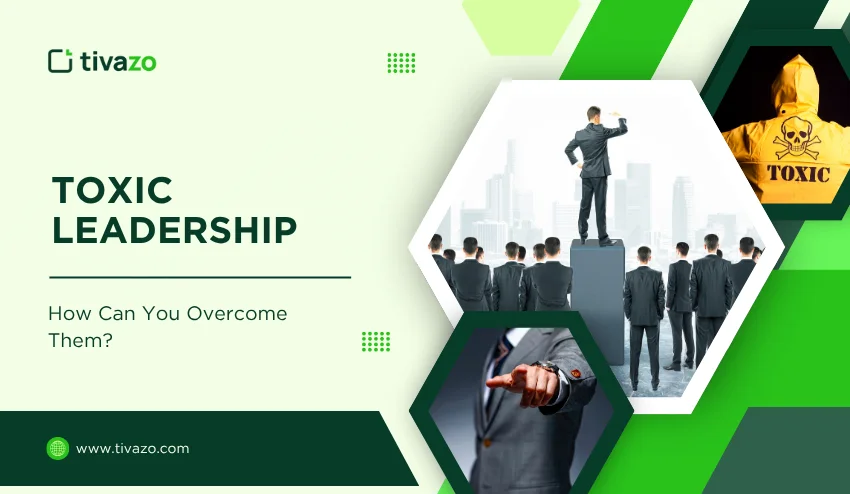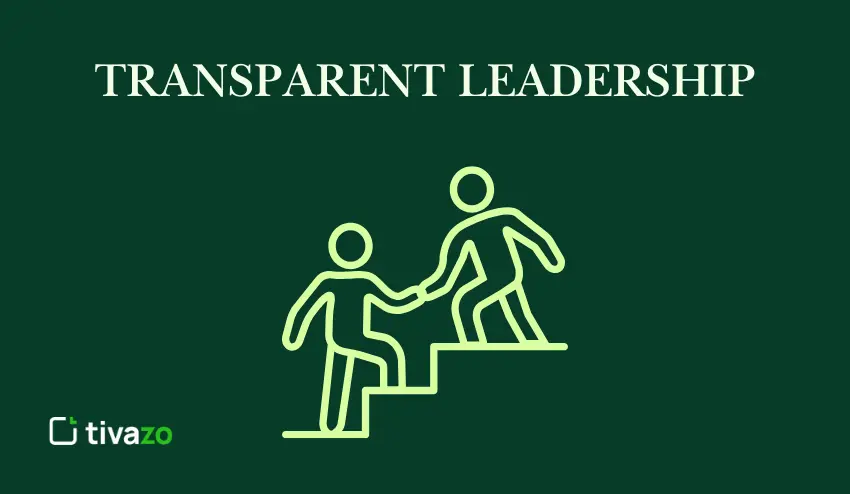Toxic leadership does not simply ruin a day of work; it creates poor morale, contributes to burnout, and gradually deteriorates performance and reputation until the consequences become obvious and costly. Whether you are an employee, an HR partner, or an executive, you can still do something about a team under a leader who leads by fear, favor, or intimidation. This guide provides an accessible, practical map: how to measure the 5 most prevalent signs of toxic leadership, the real organizational price of these behaviors, and step-by-step solutions you can implement to halt the destruction and create a thriving culture.
Key Highlights:
- What is toxic leadership?
- The 5 signs of toxic leadership
- The impact of toxic leadership
- Solutions for combating toxic leadership
- Addressing toxic leadership from the top
- Debunking common myths about toxic leadership
- Practical tools and scripts
What is toxic leadership?
Toxic leadership is a trend of behaviors where a leader’s attitudes, motives, and actions consistently damage subordinates, teams, and the broader mission of an organization. Toxic leaders often observe short-term success, meeting goals, closing deals, or “producing results,” but at a cost to people, trust, and the long-term health of the organization.
Common features:
- Self-serving decision-making
- Fear or intimidation used as motivation
- Inflexibility in accepting feedback or accountability
- Favoritism, gossip, barring, or bullying
- Micromanaging and hoarding information
Understanding the definition helps you recognize that bad behavior is not simply “tough leadership” but is, in fact, a real organizational risk.
The 5 signs of toxic leadership
The following are the five signs you can observe. For each sign: what it looks like, why it is toxic, and a quick fix you can deploy.
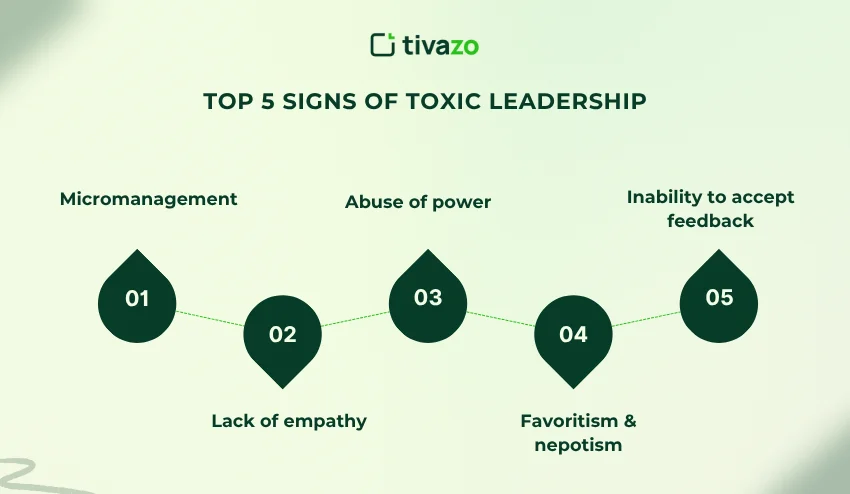
1. Micromanagement
What it looks like: The leader requires approval for small, mundane work; keeps checking on the output of the work; rewrites others’ deliverables; and does not allow anyone to actually have or use meaningful authority.
Why it hurts: Micromanagement erodes autonomy, creativity, and ownership. Smart employees leave. The ones who stay are the bare-minimum employees, where they’re just going through the motions, waiting for someone to tell them what to do.
Quick fixes:
- Re-establish clear boundaries: suggest using a RACI (Responsible/Accountable/Consulted/Informed) for work that happens regularly to be clear about who has authority for decisions.
- Establish status cadences: try to use weekly check-ins and/or dashboards to minimize the time you spend with ad-hoc interruptions (some unplanned work can make life “exciting”).
- Coach up: suggest that the leader take advantage of some leadership coaching focusing on delegation and trust (helping the leader focus on what they are losing in productivity)..
2. Lack of empathy
What it looks like: The leader evaluates people solely based on short-term outputs, does not take signs of burnout into account, does not acknowledge personal anguish, and views employees as interchangeable assets.
Why it hurts: The absence of empathy erodes engagement, reduces discretionary effort, and is associated with increased turnover. Employees who feel unseen will stop innovating and generally caring.
Quick fixes:
- Take small steps: conduct an ultra-short pulse survey or 1:1 structure asking about the employee’s workload and wellness, not just status.
- Model empathy in meetings (ex. “Before we finish, does anyone need any additional support?”).
- Be open to conducting a series of short training modules on emotional intelligence and listening; perhaps frame it as talent retention training, and suggest a return on investment.
3. Abuse of power
What it looks like: Intimidation, public humiliation, threats to careers, or subtle manipulation to achieve an outcome.
Why it hurts: Fearful climates undermine orthodox reporting/outcome, drive individuals to cut corners, and present greater legal and ethical exposure. In the long run, they undermine trust and the brand.
Quick fixes:
- Document – encourage the affected employee to document the dates, people who witnessed it, and the outcome (always important if escalation is needed).
- Create safety in reporting – put in an anonymous report to escalate, involve ombudspersons, or use tiny third parties to communicate on a hotline.
- Consequences need to be enforced – emphasize that even senior leaders are going to have to take action on verified instances of misuse of power..
4. Favoritism & nepotism
What it looks like: Promotions or opportunities that are rewarded due to personal loyalties rather than merit; employees are protected from scrutiny.
Why it hurts: Favoritism destroys fairness, creates resentment, and undermines meritocracy; you lose top talent and mediocrity rises.
Quick fixes:
- Standardize promotion criteria and make it public.
- Rotate review panels so the decision is cross-checked across functions.
- Use calibration meetings with HR to evaluate promotions based on objective metrics and behavioral feedback.
5. Inability to accept feedback
What it looks like: The leader responds defensively to feedback, retaliates against the feedback provider, or totally disregards constructive feedback.
Why it hurts: When leaders don’t hear feedback, the organization blinds itself to emergent risk. Innovation stops, and the small problem becomes a crisis.
Quick fixes:
- Instantiate structured 360º feedback with external facilitation.
- Normalize reflective practices (i.e., after-action reviews that examine systems rather than people).
- Tie everything that metrics leadership performance to outcomes for people (engagement, retention, team health) not output.
The impact of toxic leadership: short-term and long-term
Toxic leadership may indeed achieve short-term objectives, but the price can be high. Even if it appears leaders are driving performance, the long-term consequences, such as decreased morale and burnout, can be highly detrimental to the organization. Negative exposure does not happen overnight and builds over time. This negatively impacts both people and performance in ways that stifle any chance of future growth and sustainability.
- Burnout and mental health strain on employees
- Increased attrition and rising costs of hiring.
- Declining productivity and creativity.
- Damage to employer branding and public image.
- Strategic mistakes are informed by a short-term mindset or information hoarding.
These costs are additive. A few “high performer but toxic” leaders may look better for the organization financially today, but in the end, they can slowly hollow out the capability and pipeline for tomorrow.
Leadership styles that tend to foster toxicity
There are some leadership styles that lead towards, or create, toxic environments, particularly when taken too far. Controlling leaders, leaders that permit the team and organization a vote, and those that focus exclusively on results, tend to suppress innovation as well as organizational morale. The antidote is not to eliminate all strong leaders, but rather to temper drive with some balance of empathy, humility, and accountability to create a healthier culture.
- A leadership style that values no input.
- Command-and-control managers who reward compliance rather than commit to new initiatives.
- Overly results-oriented leaders who overlook culture and people metrics.
- Leaders who are charismatic but not accountable to others, who rely on their personal influence without safety rails in place.
The solution is not to eliminate strong leadership, but to add balance between drive, humility, empathy, and accountability.
Solutions for combating toxic leadership (practical and prioritized)
Here’s your plan of action, which you can adjust as needed, ordered by the speed of impact.
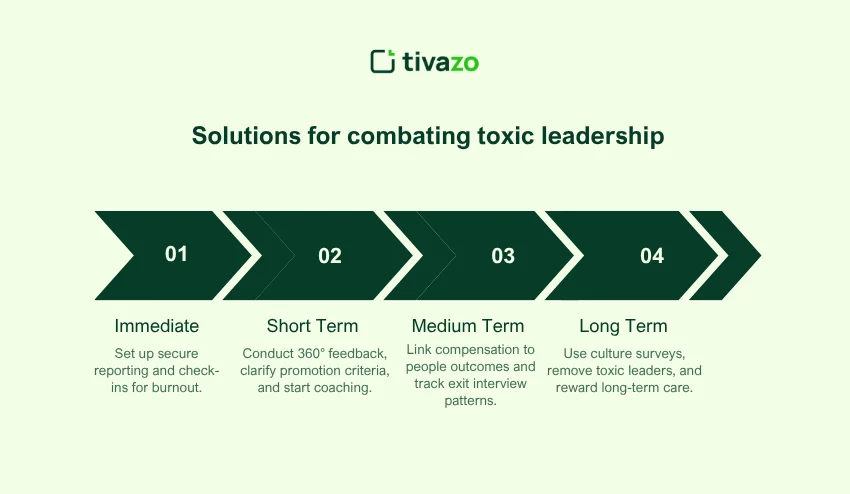
Immediate (0–30 days)
- Establish a secure reporting system: Make it easy and safe to report.
- Document for the future: HR should proactively provide support and document evidence for where toxicity is reported.
- Quick wins: Introduce daily/weekly check-in times for teams to begin identifying burnout early and act on it.
Short term (1–3 months)
- Conduct a leadership behaviour audit: 360° feedback of managers.
- Communicate clear promotion & performance criteria: Including people, metrics as a part of this process.
- Formally start coaching for leaders who are interested in improving.
Medium term (3–12 months)
- Integrate people outcomes in executive-level compensation and reviews.
- Create leadership and development tracks oriented around empathy, accountability, and psychological safety.
- Utilize exit interview data to see if there are repeated behaviours/ patterns related to their leadership.
Long term (12+ months)
- Regularize culture measures: Pulse surveys, anonymous feedback loops, and culture scorecards.
- And perhaps, structural change: remove leaders who will not change as a result of the previous development work.
- Reward leaders who take the long view and show caring behaviours vs those who only achieve short term results.
How toxic leadership affects company culture
A toxic leadership impact is the erosion of company culture and the creation of a culture that undermines psychological safety, blocks collaboration, and discourages innovation. Teams become self-protective, and long-term growth is sacrificed for short-term wins. A strong company culture is a key ingredient to improving performance, and fixing culture has been shown to transform results.
- Psychological safety goes away when people are afraid to speak up.
- Collaboration goes away when teams are looking out for themselves.
- Innovation goes away when risk-takers are punished.
- Teams will prioritize short-term wins over long-term growth.
Culture is not ‘soft’, it is business infrastructure. Fixing culture fixes performance.
Addressing toxic leadership from the top
If toxic leadership is to be eliminated, you need to change the leadership at the top. There should be clear expectations for executives, and to define expectations, a company should have behavioral standards alongside performance targets. Leadership KPIs must have people metrics related to engagement and retention, and toxic leadership must be addressed in policy (e.g., you can have “no brilliant jerks” policy). Other than setting behavioral expectations for leaders, companies need to invest dollars in leadership development, including coaching and emotional intelligence. If the top leaders of an organization tolerate toxic behavior for short-term benefit, the entire organization will reflect the same culture.
- Define leadership expectations: partners around expectations should have a clear leadership compact between employees and the company that contains both behavior and target expectations.
- Measure what matters: leadership KPIs must have people performance metrics (Engagement, manager effectiveness, retention).
- Expect accountability: make it explicit that toxic behavior voids results; you cannot have “brilliant jerks” on your leadership team.
- Invest in development: required coaching, coaching peer groups, and emotional intelligence training for managers
Top management sets the tone, and if the board or CEO tolerates toxicity for a short-term gain, the culture will follow.
Debunking common myths about toxic leadership
Misconceptions associated with toxic leadership often enable and empower the behaviors that cause most harm. Some think that tough, unforgiving leadership is something that will, on all occasions, produce better results and outcomes. Others think that toxic leaders are simply high performers who should be tolerated because of their results. Some even think that toxic leaders cannot change. These myths need to be debunked, as they disregard the length of damage toxic leadership creates. Let us disavow some of the most common myths.
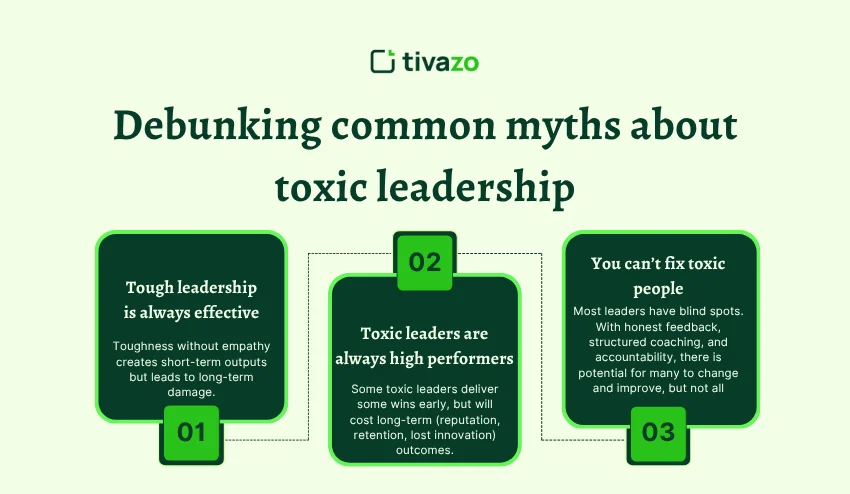
Myth 1: “Tough leadership is always effective.”
Truth: Toughness without empathy creates short-term outputs but leads to long-term damage.
Myth 2: “Toxic leaders are always high performers.”
Truth: Some toxic leaders deliver some wins early, but will cost long-term (reputation, retention, lost innovation) outcomes.
Myth 3: “You can’t fix toxic people.”
Truth: Most leaders have blind spots. With honest feedback, structured coaching, and accountability, there is potential for many to change and improve, but not all. All organizations must also sanction leaders who will not change.
The role of accountability in preventing toxic leadership
Accountability is a necessary component to preventing toxic leadership. Clear expectations, regular feedback, and accountability through appropriate consequences are necessary to make sure that leaders/leadership are held to a high standard of conduct and behavior. If accountability replaces hero worship, organizations can build greater resilience in the culture.
- Articulate expectations and publicize them throughout the organization.
- Assess and track behaviors (360s, skip-level feedback, team health metrics).
- Ensure fair consequences, rewards, and promotions for results, and the process followed to get to a result.
- Create redundancy in decision-making so that power is not held by one unchecked individual.
When accountability moves the needle beyond hero worship, the culture is resilient.
Practical tools and scripts (use immediately)
Script for a 1:1 with a toxic manager (to give feedback safely):
“Thanks for making the time. I want to share something I’ve noticed that is impacting my work: When you [what occurred/behavior], I feel [impact on your work]. I would like to try [what I would like to try/changed behavior] for two weeks and check back, are you open to that?”
How HR should respond to a report:
- Acknowledge the concern and document the concern.
- Support and offer confidentiality immediately after.
- Gather evidence and witnesses.
- Convene an impartial review panel (if applicable).
Leadership compact example line:
“We will continue to focus on results with courage and compassion; we hold each other accountable for how we achieve those results, we will not tolerate intimidation, favoritism or bullying.”
Final checklist to make your organization safer today
- Publish a leadership behavior charter.
- Launch confidential reporting and support.
- Begin 360° feedback for all managers.
- Link a portion of leadership compensation to people metrics.
- Train leaders on empathy, delegation and emotional regulation.
- Standardize your promotion criteria, and review them in calibration meetings.
- Take action when behavior hasn’t improved.
Conclusion
We can solve toxic leadership but it does take courage, clarity, and consistent action. The price of doing nothing is high depleted teams, reputational harm, and stunted growth. If you suspect toxicity in your workplace, then use the tools in this article. Start small, (document, speak up safely, set boundaries) scale what works (360s, coaching), and demand accountability. Inspiring leadership lifts people and when it does, business results follow.
If you’d like, I can distill this down to a ready-to-publish blog for Tivazo with SEO (headings, meta description), and a short intro blurb for social, and a suggested featured image. Just let me know which tone you like (authoritative, conversational, or coaching), and I will complete the final draft.
